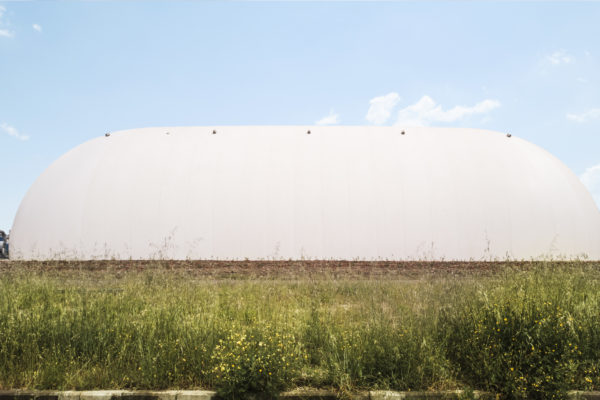Italy-based Energy Dome has put into operation its first carbon dioxide (CO2) battery facility at an unspecified location in the Italian province of Nuoro, in Sardinia island, Italy.
“Energy Dome will operate the plant commercially on the Italian grid,” a spokesperson from the company told pv magazine. “The commercial demonstration plant is planned to be operated commercially on the electrical grid providing most needed regulation services onto the electrical grid as storage standalone. The power for charging the plant is drawn from the national grid.”
According to the company, the pilot project is currently providing the expected performance in terms of long-duration storage and round-trip efficiency. “The Sardinia demonstration project has proven this innovative process using off-the-shelf equipment available from a globally established supply chain, demonstrating that the rapid global deployment of the CO2 Battery is now possible with no bottlenecks,” it said in a statement, without providing more details on the project.
Energy Dome said, however, that it was planning to build its first full-scale 20 MW/200 MWh commercial plant soon and to finalize its construction by the end of 2023. “To achieve this, Energy Dome has tapped a team of experts in turbomachinery, process engineering and energy, with a proven track record in ventures designing novel turbines and building over 500 MW of energy projects,” it further explained.

The company recently entered into a cooperation agreement with Italian utility A2A for the construction of a 20 MW facility with a five-hour storage capacity. It also signed a deal with the industrial conglomerate Ansaldo to develop and build long-duration energy storage projects in Italy, Germany, the Middle East and Africa.
Energy Dome's battery is based on compressed CO2 and, according to the manufacturer, it requires less space than systems based on compressed air. “The concept is the same as compressed air energy storage (CAES) and liquid air technologies,” Energy Dome CEO Claudio Spadacini told pv magazine in a recent interview.

The system draws CO2 from an inflatable atmospheric gas holder, which the company calls the “Dome,” and stores it under 70 bar pressure at ambient temperature in a high-density liquid state. When the stored energy is needed, the CO2 is evaporated and conveyed through a turbine that produces power. After this process is implemented, the CO2 goes back to the atmospheric gas holder to be used again for another storage cycle, without any emissions to the atmosphere.
Energy Dome's battery was a winner in the Bloomberg New Energy Finance (BNEF) Pioneers 2022 technology competition.
This content is protected by copyright and may not be reused. If you want to cooperate with us and would like to reuse some of our content, please contact: editors@pv-magazine.com.




According to this description the energy is stored as the potential energy of the compressed CO2 gas and liquid. Then that stored energy is recovered through the expansion of the material. I would assume that the the energy absorbed by the expanding gas is also utilized. So the input energy is derived from electrically driven compressors. It would be interesting to see an energy flow diagram of the entire process.
Thank you for this useful update!
How is the heat of compression captured, stored and re-used in this process? This important aspect, a bit of a littler is not clear in Dome Energy literature